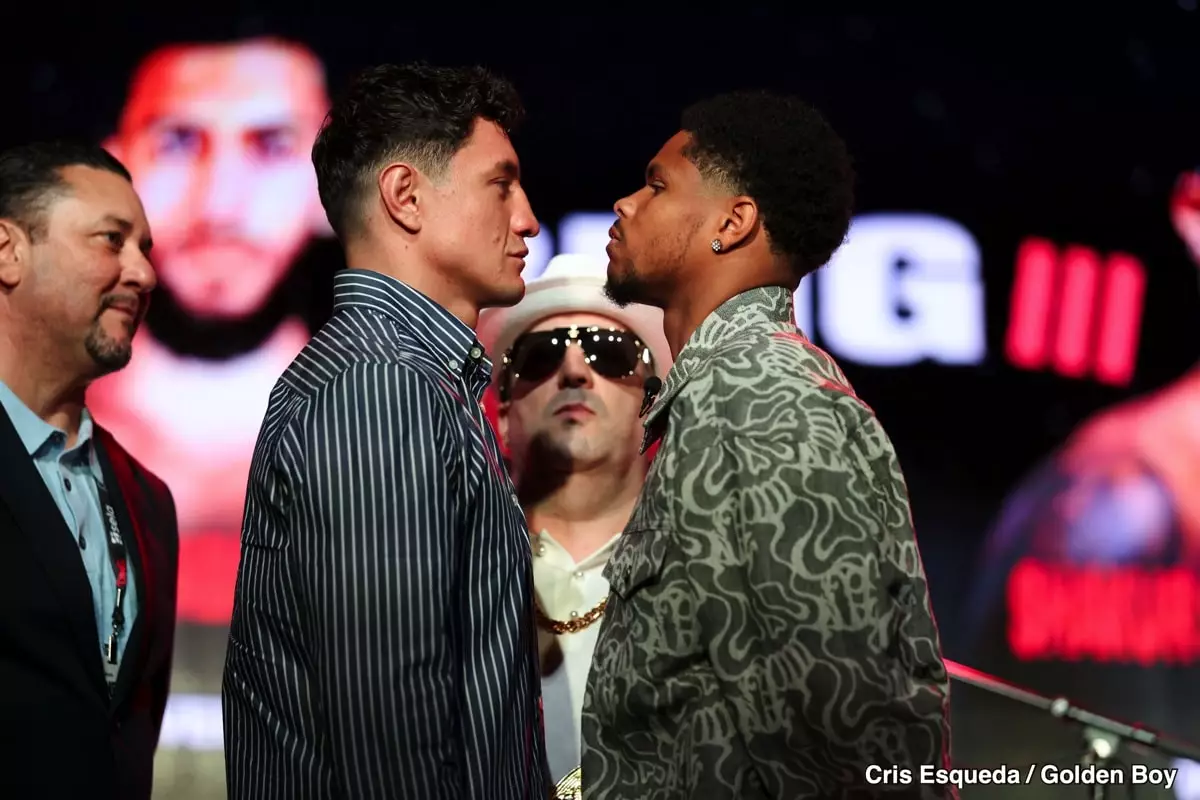The narrative around rings and fighting spaces is often exaggerated, with some analysts suggesting that a smaller ring inherently benefits a particular style. In this case, Tim Bradley hints at a potential strategic shift by Turki Alalshikh, proposing to shrink the ring for Stevenson’s fight against William Zepeda. While this may stir controversy, it inherently undervalues the precision, adaptability, and resilience of modern champions. The truth is, a skilled boxer like Stevenson should thrive regardless of ring size, provided his physical condition and tactical intelligence are intact.
What Bradley perhaps overlooks is the importance of ring geography—not merely in terms of space but in the context of pacing and mental toughness. Fighters like Stevenson, who employ a “hit-and-run” style, might find their approach slightly hampered in a limited space. But the essence of boxing isn’t about the size of the ring alone; it’s about how effectively a fighter can manipulate the environment to their favor. A true champion adapts, utilizing angles, footwork, and strategic clinching rather than relying solely on ring dimensions to dictate the fight.
The Reality of Shakur Stevenson’s Style in High-Stakes Matchups
Bradley’s assertion that Stevenson will pepper Zepeda with shots is a superficial prediction—one that masks the complexity of modern boxing. Stevenson’s style, characterized by agility and strategic distancing, works well against less aggressive opponents. However, Zepeda’s tenacity, ring-cutting ability, and powerful punch output challenge this style significantly. Stevenson must evolve beyond natural conservatism to meet the demands of a true top-tier confrontation, especially in a hostile environment like New York.
The criticism about Stevenson’s hands being “brittle” reveals a significant vulnerability. Historically, fighters with fragile hands struggle to sustain consistent output, particularly in fights where sustained engagement is necessary. Against Zepeda, known for relentless pressure and volume punching, Stevenson’s hand durability will be tested. His past reliance on body shots and quick footwork may not suffice if his hands give out prematurely. A boxer’s true testament lies in their ability to endure and adapt under pressure—traits that Stevenson must demonstrate now more than ever.
Strategic Necessity: From Running to Engaging
The suggestion that Stevenson should “fight more” is not merely about style preference but about survival in the ring. Fans demand excitement, especially when paying premium prices in a city like New York. When fighters adopt a defensive, evasive approach, they risk turning the fight into a crowd-pleasing bore. The stakes are higher—boxing isn’t an exhibition; it’s a gladiatorial contest where the audience values action and authenticity.
Stevenson’s previous fights showcase a pattern of choosing safety over chaos, which in a way, reflects an unfulfilled potential. The real question lies in his willingness to confront this challenge head-on. Will he stand toe-to-toe when necessary, or will he rely on the safety of movement and clinches? Fighters like Stevenson must accept that occasional engagement, even at the risk of taking punches, is essential to cementing a legacy that transcends points decisions and wins in low-profile bouts.
The Political and Promotional Dynamics of Modern Boxing
The strategic matchmaking that has limited Stevenson’s opposition has more to do with politics and promotional interests than individual skill levels. Management teams and promoters aim to protect their star fighters until that lucrative Gervonta Davis bout is secured. This cautious maneuvering might be rational from a business standpoint but dilutes the competitive integrity that fans crave.
Stevenson’s recent opposition—Josh Padley and Artem Harutyunyan—are far from elite, signifying a need for him to elevate his contest to the next level. Fighters like Andy Cruz, with their proven top-tier skill, demonstrate the tension between management decisions and fans’ expectations. The current pattern suggests an emphasis on safeguarding future megafights over delivering consistent, compelling entertainment. This disconnect can ultimately backfire; fans want to see their heroes face real adversity.
Will Stevenson Rise to the Occasion or Continue Playing It Safe?
Stevenson stands at a pivotal crossroads. The fight against Zepeda isn’t just about winning; it’s about proving he can handle pressure, adversity, and the relentless nature of top opposition. The choice to engage more actively, to stand his ground and exchange when needed, will define his career. If he relies solely on evasiveness, he risks not earning his full potential and disappointing his core supporters.
The New York audience, known for demanding action, will not tolerate politeness or avoidance. They demand fighters to display grit, heart, and resilience. Stevenson’s talent is undeniable, but his critics—and future hall-of-fame standards—call for authenticity. It’s not just about victory; it’s about making a statement that he belongs among boxing’s elite for the long haul.
By stepping up, embracing the chaos, and showing durability—both mental and physical—Stevenson will not only impress the crowd but also secure his place in premium matchups. Whether he takes the risk or maintains his cautious style, the outcome of this fight will serve as a litmus test for his readiness to ascend into real boxing greatness.


Leave a Reply